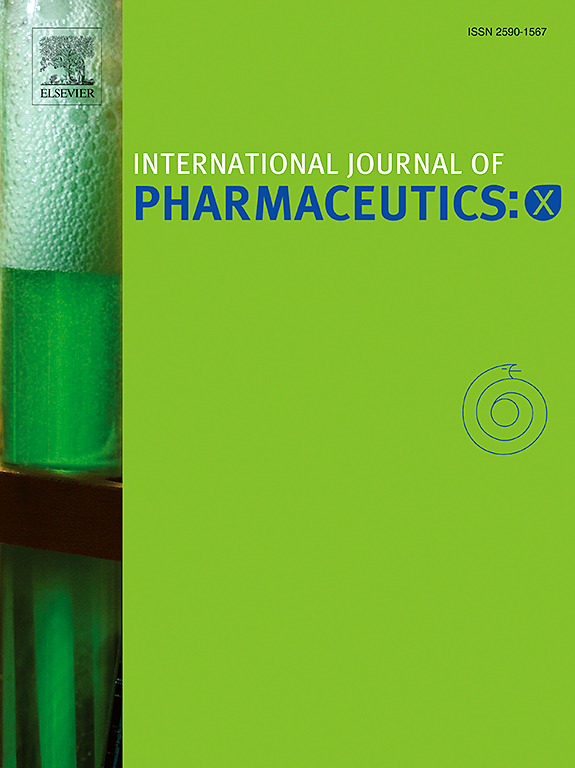Developing Immunoniosomes (INs): Antibody and Fab conjugations of niosomal nanoparticles via UV-NBS and EDC/NHS chemistry for treating glioblastoma cells
IF 6.4
2区 医学
Q1 PHARMACOLOGY & PHARMACY
引用次数: 0
Abstract
Antibody-conjugated nanoparticles (ACNPs), particularly immunoliposomes (ILs), have gained significant attention in cancer treatment due to their enhanced efficacy and superior tissue penetration. However, their high production costs and technical challenges underscore the need for more cost-effective alternatives. Niosomes, with their lower production costs, improved stability, and biocompatibility, have emerged as promising alternatives to liposomes in drug delivery. This study introduces immunoniosomes (INs), a novel class of antibody-conjugated niosomes, through two conjugation strategies: (i) UV-NBS, a site-specific covalent conjugation method utilizing an indole ring structure for moderate binding to the variable regions of antibodies and Fab fragments, and (ii) EDC/NHS chemistry, which conjugates antibodies to carboxylated niosomes via primary amines on lysine sidechains. Bevacizumab, a monoclonal antibody targeting VEGF and approved for the treatment of various cancers including glioblastoma multiforme (GBM), was used as a model therapeutic. Both Bevacizumab and its Fab fragment were conjugated to niosomes and evaluated in U87 glioma cells (overexpressing VEGF) and human umbilical vein endothelial cells (HUVECs) (representing normal VEGF expression). Physicochemical characterization of the conjugated niosomes confirmed hydrodynamic sizes ranging from 100 to 200 nm, neutral surface charge, and dispersity indices below 0.5—properties critical for effective cellular penetration and drug delivery. Cellular toxicity assays, conducted at a 10× dilution from commonly reported concentrations, highlighted the role of the autocrine loop in U87 glioblastoma cells. Importantly, specific Nio-Fab conjugate formulations, created through both site-specific and randomized conjugation strategies, exhibited enhanced cytotoxicity toward U87 cells while sparing healthy endothelial HUVEC cells. In summary, this research establishes novel conjugation strategies to produce stable, site-specific, and randomized antibody-niosomal conjugates with enhanced half-life and selective toxicity against GBM cells. By offering an alternative route for antibody delivery through niosomal nanocarriers, these findings open new avenues for the development of more effective GBM therapeutics, warranting further non-clinical and clinical investigations.

发展免疫小体(INs):通过UV-NBS和EDC/NHS化学制备纳米粒子抗体和Fab偶联治疗胶质母细胞瘤细胞
抗体共轭纳米颗粒(ACNPs),特别是免疫脂质体(il),由于其增强的疗效和优越的组织穿透性,在癌症治疗中得到了极大的关注。然而,它们的高生产成本和技术挑战强调需要更具成本效益的替代品。乳质体以其较低的生产成本、更好的稳定性和生物相容性,已成为脂质体在药物输送中的有希望的替代品。本研究通过两种偶联策略介绍了一类新型抗体偶联乳小体:UV-NBS,一种位点特异性共价偶联方法,利用吲哚环结构与抗体和Fab片段的可变区域适度结合;EDC/NHS化学,通过赖氨酸侧链上的伯胺将抗体偶联到羧化乳小体上。贝伐单抗是一种靶向VEGF的单克隆抗体,被批准用于治疗多种癌症,包括多形性胶质母细胞瘤(GBM),被用作模型治疗。将贝伐单抗及其Fab片段与niosomes结合,并在U87胶质瘤细胞(过表达VEGF)和人脐静脉内皮细胞(HUVECs)(代表正常VEGF表达)中进行评估。共轭纳米体的物理化学表征证实了其流体动力学尺寸在100至200 nm之间,表面电荷为中性,分散性指数低于0.5,这些特性对有效的细胞渗透和药物传递至关重要。在通常报道浓度的10倍稀释下进行的细胞毒性试验强调了自分泌环在U87胶质母细胞瘤细胞中的作用。重要的是,通过位点特异性和随机偶联策略创建的特异性Nio-Fab偶联制剂对U87细胞表现出增强的细胞毒性,同时保留健康的内皮HUVEC细胞。总之,本研究建立了新的偶联策略,以产生稳定的、位点特异性的、随机的抗体-niosomal偶联物,具有增强的半衰期和对GBM细胞的选择性毒性。通过提供通过niosomal纳米载体传递抗体的替代途径,这些发现为开发更有效的GBM治疗方法开辟了新的途径,值得进一步的非临床和临床研究。
本文章由计算机程序翻译,如有差异,请以英文原文为准。
求助全文
约1分钟内获得全文
求助全文
来源期刊

International Journal of Pharmaceutics: X
Pharmacology, Toxicology and Pharmaceutics-Pharmaceutical Science
CiteScore
6.60
自引率
0.00%
发文量
32
审稿时长
24 days
期刊介绍:
International Journal of Pharmaceutics: X offers authors with high-quality research who want to publish in a gold open access journal the opportunity to make their work immediately, permanently, and freely accessible.
International Journal of Pharmaceutics: X authors will pay an article publishing charge (APC), have a choice of license options, and retain copyright. Please check the APC here. The journal is indexed in SCOPUS, PUBMED, PMC and DOAJ.
The International Journal of Pharmaceutics is the second most cited journal in the "Pharmacy & Pharmacology" category out of 358 journals, being the true home for pharmaceutical scientists concerned with the physical, chemical and biological properties of devices and delivery systems for drugs, vaccines and biologicals, including their design, manufacture and evaluation. This includes evaluation of the properties of drugs, excipients such as surfactants and polymers and novel materials. The journal has special sections on pharmaceutical nanotechnology and personalized medicines, and publishes research papers, reviews, commentaries and letters to the editor as well as special issues.
 求助内容:
求助内容: 应助结果提醒方式:
应助结果提醒方式:


